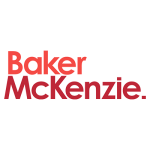Over the past two years, during the largest contraction of the international leveraged finance markets in over a decade, financing markets have reverted to more traditional positions in certain respects (for example, deal terms, pricing), while in other respects (such as product variations, ESG and other tangential forces), they explored new ground.
Notably during this period, the mix among leveraged finance products has continued to evolve, with a recent trend towards direct lending products competing with more traditional options of international syndicated loans, high-yield bonds and other sources of lending.
Following high levels of activity in 2020 and 2021, this contraction was mainly due to uncertainty in the global markets caused by macroeconomic volatility, including interest rate hikes, inflationary pressure and geopolitical unrest.
International capital markets have effectively been closed to new issuance in Europe for the longest period on record (including following the 2008 financial crisis) following the invasion of Ukraine by Russia in 2022. Other factors affecting the markets include the related slowdown of M&A activity and the lack of an imminent refinancing ‘wall’ for corporates that in prior dips may have been forced into untimely action.
Entering Q4 2023, many market commentators expect these trends to continue in the short to medium term, despite the recent uptick in high-yield funding (particularly in the US) and the advent of alternative lending in new and diverse markets. So while the jury is out, there is some cause for optimism.
Changes in borrowing activity
While the product mix between high-yield and term loan B borrowings remained in line with past trends, new opportunities arose for direct lenders, particularly for those with the capacity to finance larger transactions in the wake of tighter lending by traditional banks and the recent weakness of the high-yield market. In this context, term loan A-type (i.e., amortising) loans also resurfaced in certain discussions as a potential source of capital given current macroeconomic pressures, and in some cases a desire for more traditional protections for lenders.
Markedly, US market trends representing more than two thirds of global leveraged finance activity remain the main factor affecting global markets. While the US and Asian markets continue to converge over time, many jurisdictions in the Europe, Middle East and Africa region are retaining bespoke deal structures (i.e., enforcement priority, governing law).
As traditional sources of capital were scarcer, market participants turned to alternative sources of funding such as private debt or bespoke local solutions to meet their financing needs.
Direct lending saw a boom in growth across the board, as direct lenders were able to accommodate tailored solutions on a case-by-case basis and provide capital when other sources were not readily available.
Borrowers also sought local sources of funding such as bank-led syndicates in the local loan market and bespoke local bond solutions (for example, the Schuldschein in Germany, Nordic bonds in that region and sukuk in the Middle East and North Africa region) that also became workable sources, allowing borrowers to bridge their financing needs until capital markets open again.
New challenges with new solutions
From an industry perspective, financing activity was broadly down across the board, with the obvious candidates, such as travel and retail, hit hardest. Still, despite market contractions, there was not a significant increase in the number of companies defaulting or entering formal restructuring processes. This was in part because current covenant flexibility includes less strict default triggers and provides more alternatives for issuers and borrowers to address their funding needs, and in part because in many international jurisdictions insolvency laws have become more stable and sophisticated, allowing lenders to act consensually to work out financing solutions.
At the same time, while market conditions in many respects have been improving, the COVID-era government relief programmes have slowly been wound down, adding some pressure, especially in those industries most hit by the pandemic that turned to such funding, like commercial mortgage-backed securities.
Despite the slow level of activity observed throughout the market, investors and sponsors did not generally push strongly to amend financial covenants in existing packages for repeat deals. Nevertheless, there was increased investor push-back on 'bad' credits, while 'good' credits continued with their existing covenant packages unaffected.
Investors’ primary focus has been pricing, but given the increased risk of a downturn, there has also been intensified scrutiny of certain key deal terms, including overall debt capacity, debt priming and value leakage. In many recent transactions, for instance, lenders and investors have been pushing to include ‘J.Crew blockers’, which prevent companies from transferring intellectual property into unrestricted subsidiaries. Nevertheless, deal terms remain broadly in line with past practice and there has not been a significant reversal of positions in documentary terms. Interest rates, however, saw sharp increases, back to ‘high-yield’ levels observed prior to the Lehman-led financial crisis.
ESG and digital bonds
ESG remained at the top of everyone’s minds, as borrowers continued to enhance their reporting and regulators increased their scrutiny. ESG is expected to fall under further inspection as borrowers are required to test sustainability performance targets on instruments dating back two years or more in the initial ESG financing waves. Although green financing focuses on the use of proceeds, sustainability-linked instruments look at ESG performance over time and the proceeds may be used for general corporate purposes or refinancings. The majority of the H1 2023 issuances adopted a higher increase to the coupon for each sustainability target not met, while fewer issuances featured comprehensive pricing protections, including an increase to the coupon and the redemption premium.
Certain borrowers are also expanding their sustainability goals and targets beyond the ‘E’ of ESG and looking towards social and governance (the ‘S’ and ‘G’) financing solutions as stakeholders focus on the ways businesses are being run, their supply chain and, more broadly, inclusion, diversity and equity priorities.
Digital bonds also continued to evolve, as market participants start wrapping their heads around the potential of blockchain technology in digital ledger technology. These new developments have not yet come to the wider syndicated markets and regulatory bodies are still considering or drafting legislation to govern such instruments.
A bounce-back on the horizon?
With these macroeconomic and geopolitical factors now ingrained in the market and investor expectations, many commentators believe that syndicated and direct lending and capital markets financings will rebound in 2024 and beyond.
Even though higher interest rates are likely to stay, with factors such as the M&A backlog and looming maturities (and, in certain circumstances, opportunistic choices), Baker McKenzie remains optimistic that the markets will gradually improve over the course of next year and into 2025 and 2026. M&A activity will likely help to drive transactional leveraged debt requirements, although this activity will likely accelerate when buy/sell expectations equalise to this higher-rate environment to reflect the increased cost of capital.
Also, as corporate maturities for 2024 and beyond come into clearer focus, mandatory refinancing will again take centre stage. The questions are what form all these financings will take, and just when they will be.





